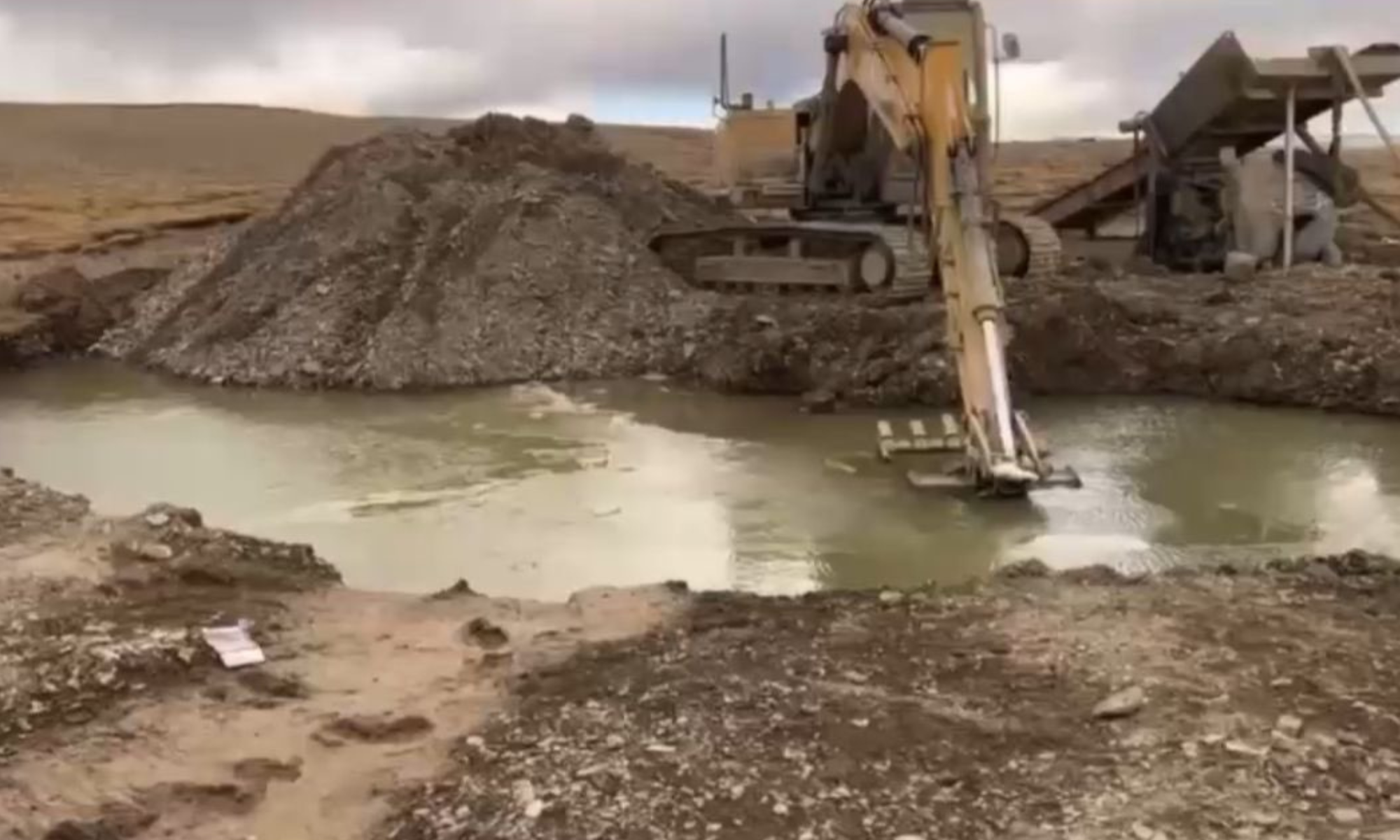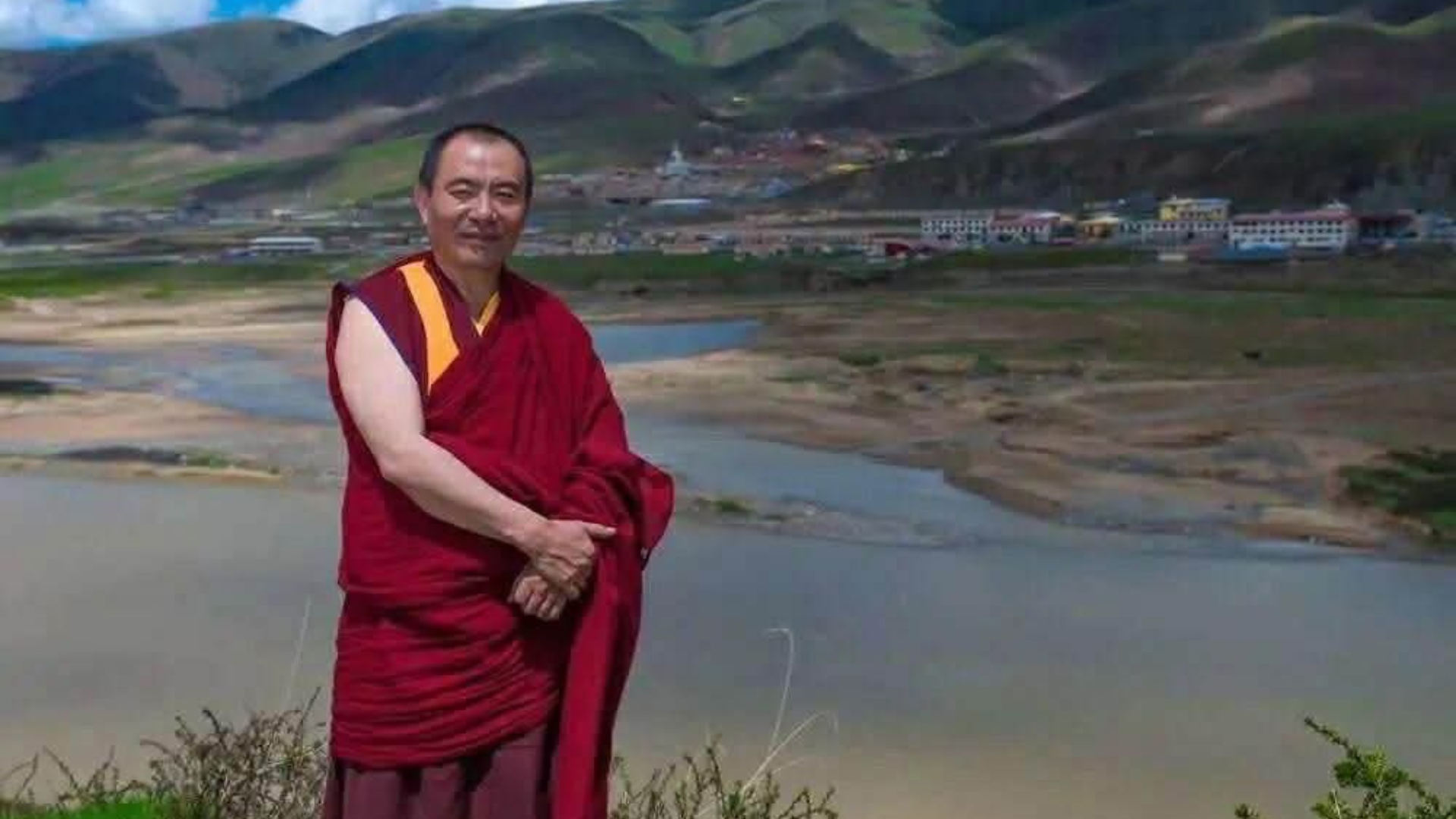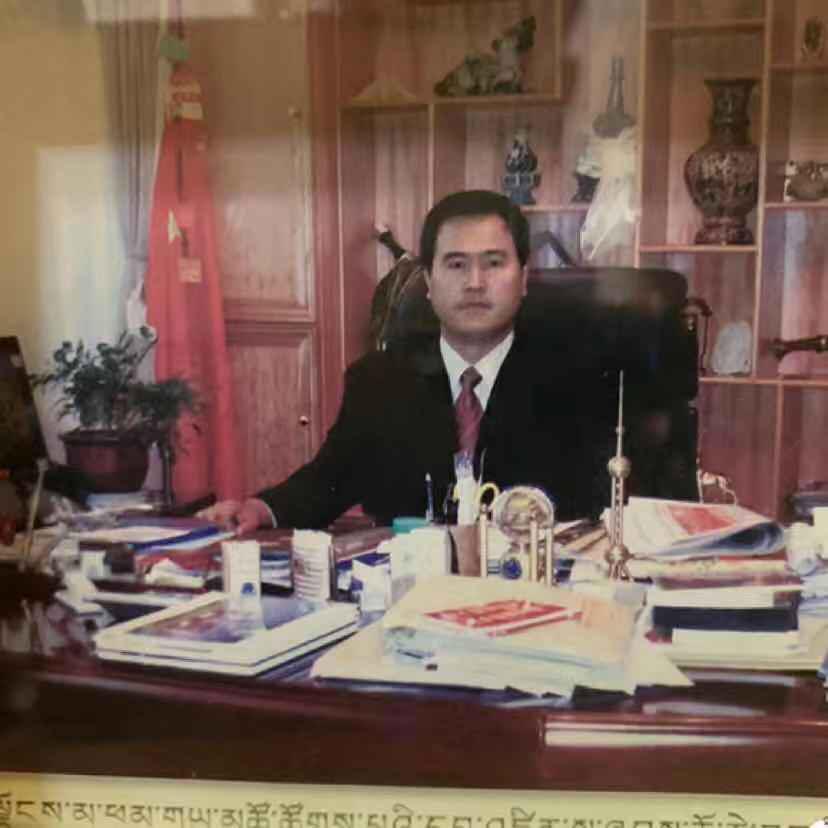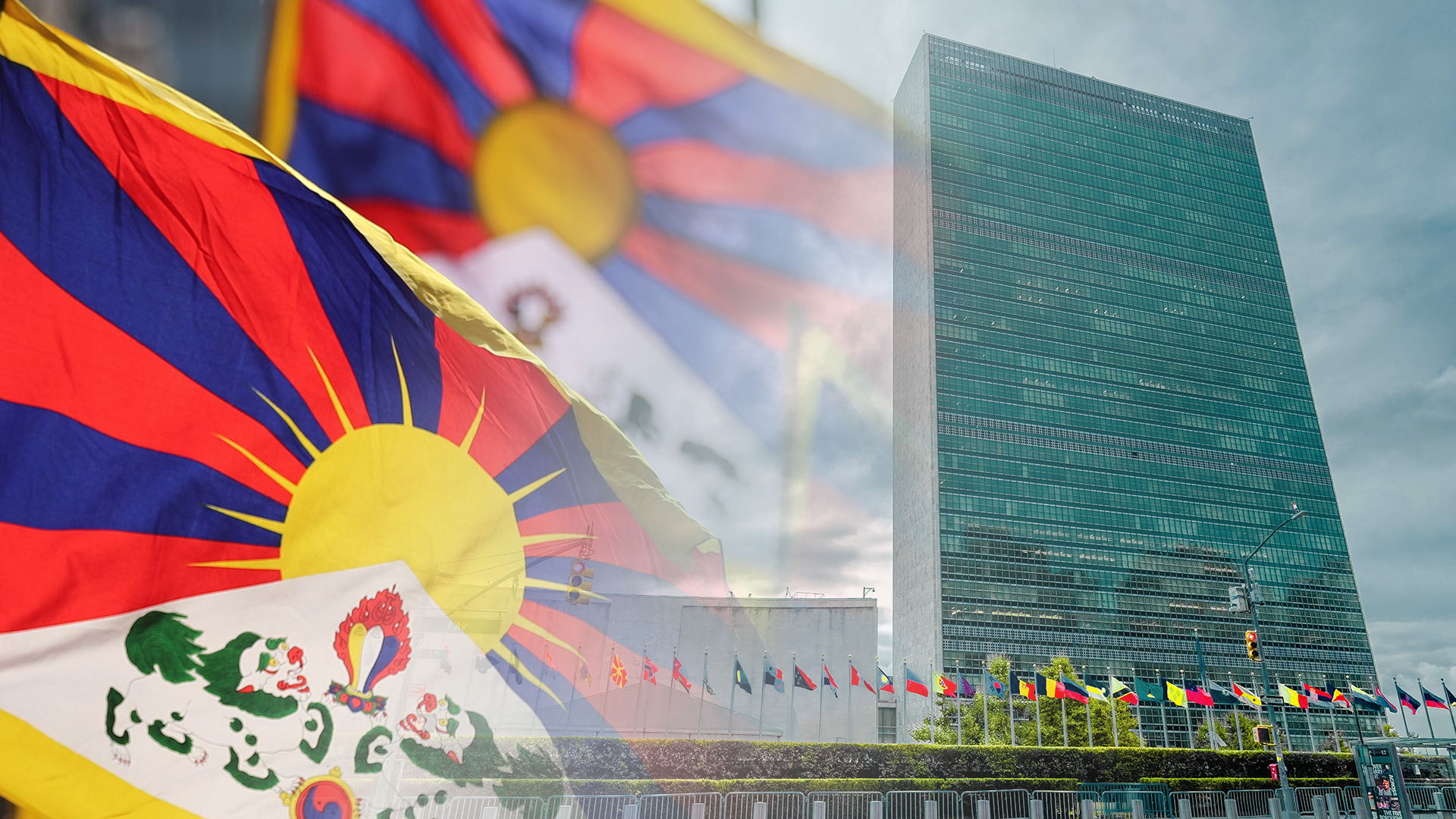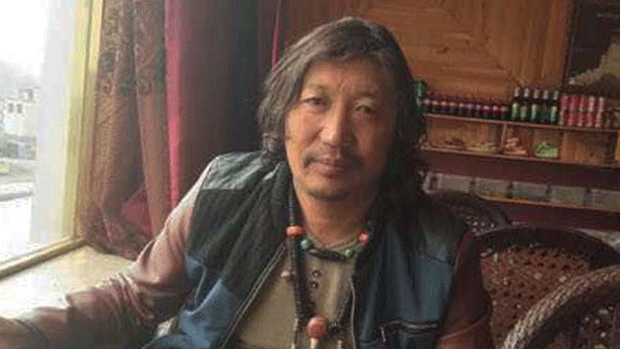
Tibetan community leader and environmental defender A-Nya Sengdra has had his seven year sentence extended, and there are serious concerns for his health in prison, according to Tibet Watch sources.
A-Nya Sengdra, who is widely known for campaigning against local corruption, illegal mining, illegal hunting and poaching of endangered animals in his home area of Golok in eastern Tibet, is serving a seven year prison sentence. He was due for release in September when his sentence expires, but according to new information, he has been charged for another offence in prison and his sentence extended. He may now not be due for release until February 2026.
A-Nya Sengdra, a nomad who was popular in his local community for his defense of the local environment and courageous critique of official corruption, has been held mostly incommunicado. In mid-August, his family were allowed to visit him for the first time this year. During last summer’s visit, the first family contact allowed in six years, they were together for only minutes. Given his frail condition during that brief encounter, serious concerns remain about his health.[1]
The injustice of the case against him has been recognised internationally. In an unusual public statement, nine UN human rights experts in 2020 told the Chinese government that they should drop the charges against A-Nya Sengdra and release him, saying: “We are deeply concerned by what appears to be the criminalisation of the legitimate work of a minority community member and human rights defender. We are also concerned about the reports of deterioration of his physical and mental integrity due to poor detention conditions.”
A-Nya Sengdra was detained by the Gade County Public Security Bureau in Golok, Qinghai (the Tibetan area of Amdo) in September 2018, charged with “gathering people to disturb public order”, a reference to his community leadership on environmental protection with local nomads, and “picking quarrels and provoking trouble”. A-Nya Sengdra’s Chinese lawyer stated at the time that he believed these charges were false and were instead related to an ongoing government-led campaign targeting Tibetans involved in political activity or celebrating their culture, which the Chinese government publicised as a crackdown on ”underworld forces”. During his initial detention, his wife was refused permission to see him.
A-Nya Sengdra has now appealed three times for a retrial without success to the Supreme People’s Court in Xi’an. His Chinese lawyer Lin Qilei said in a social media post on 5 November 2024: “As usual, I filled out the necessary forms and waited in line. After some time, a judge came out and informed me that they had decided not to review Sengdra’s case. He advised me not to return to the court regarding this matter in the future.”

Tsowo Tsering continues to be surveilled by authorities following his release from prison.
‘Non-release release’: Tibetan environmentalist endures eight months detention, continued surveillance
In another case of a Tibetan persecuted for speaking about pollution and environmental concerns, Tsowo Tsering was detained for eight months after he made a rare public appeal on social media in which he accused a Chinese company of causing extensive damage to a Tibetan river, including severe soil erosion and reduced water levels. Tsowo (also known as Tsongon) Tsering was released from detention looking emaciated and in poor health last month.
He remains under strict surveillance, in an example of what has been termed ‘non-release release’, describing the phenomenon of individual rights activists and lawyers in China often being released from prison into other, nominally ‘free’ forms of what amounts to detention, such as de facto house arrest or enforced return and restriction to their native village.[2]
In October 2024, Tsowo Tsering from Kakhog county in Ngaba (Aba), had posted a video documenting illegal sand and gravel mining that identified the company responsible for the environmental degradation, Anhui Corporation. The video went viral, attracting concern among many Chinese who are also worried about the pollution of rivers by mining, and Tsowo Tsering was arrested. His community in Tsaruma village was placed under heavy surveillance immediately after the video began to circulate.
Tsowo Tsering’s video was a last resort; a petition he had presented to local authorities had been ignored, so he made a direct appeal to the central Chinese government to protect and restore the river ecosystem of his village, and to investigate into local government departments acting in collusion with the Anhui Corporation.
UN human rights experts on the environment, free speech and human rights defenders raised concerns about Tsowo Tsering’s detention and harassment of his family members in a January 2025 intervention to the Chinese government, pointing out that: “[Tsowo Tsering] often led online campaigns advocating for the importance of environmental preservation and is a member of the ‘Environment Protection Group’, a volunteer-driven initiative with around 50 members who volunteer to clean their local environment. This group has also initiated several efforts to ban single use plastics in their communities. […] We are also notably concerned that the detention and charges against Mr. Tsering, and prolonged interrogation of his family and the information regarding the collection of IDs of any individual attending the trial, seem to be measures that have been adopted in direct retribution for Mr. Tsering’s exercise of his right to freedom of expression and his work to protect the environment.”[3]
A-Nya Sengdra and Tsowo Tsering’s imprisonment highlights the heavy price for Tibetans seeking to protect their landscape from environmental degradation, illegal mining and pollution, and the swift actions authorities take to silence them, their families and their communities.
Their concerns resonate with the warnings of Chinese scientists about the vital need to protect Tibet’s fragile high altitude environment, and the dangers of extractivist mining and damming not only on the world’s highest and largest plateau, but also downstream. Courageous Tibetan protesters in Derge who appealed against construction of the Kamtok dam last year drew global attention to the risks of a cascade of adverse consequences in Tibet and in China, serving as a reminder that China’s policies in Tibet – where water is regarded as a ‘strategic asset’ by the Communist Party state – affect global climate systems already challenged by food and water insecurity involving glacial melting and erratic monsoon cycles.
Tibet Watch report: Occupying Tibet’s Rivers, China’s Hydropower Battlefield in Tibet, https://tibetwatch.org/occupying-tibets-rivers-chinas-hydropower-battlefield-in-tibet/
Endnotes
[1] Tibet Watch report, 9 September 2024, https://tibetwatch.org/a-nya-sengdra-allowed-to-meet-family-but-remains-in-prison/
[2] Professor and Chinese law expert Jerome Cohen blog, 4 April 2020, https://www.jeromecohen.net/jerrys-blog/the-many-faces-of-non-release-release-in-china
[3] Letter by the Mandates of the Special Rapporteur on the situation of human rights defenders; the Special Rapporteur on the human right to a clean, healthy and sustainable environment and the Special Rapporteur on the promotion and protection of the right to freedom of opinion and expression, 21 January 2025, https://spcommreports.ohchr.org/TMResultsBase/DownLoadPublicCommunicationFile?gId=29635

